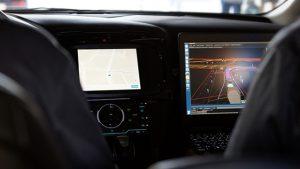 Today, for the first time, self-driving passenger vehicles will become available for public transportation in the United States.
Today, for the first time, self-driving passenger vehicles will become available for public transportation in the United States.
A fleet of autonomous cars, powered by the Uber Advanced Technologies Center (ATC) took to the streets this morning in the city of Pittsburgh, Pennsylvania to offer passengers a free, driverless experience. The steel city is an ideal choice for launching this pilot program to put to test the safety and operation of the autonomous technology in a variety of challenging driving conditions such as inclement weather patterns, high traffic areas, and a more organic (non-engineered) city layout.
The self-driving cars, a mix of both Ford Fusion hybrids and Volvo XC90 models, have been modified and equipped with an array of cameras, sensors, and LIDAR, a laser-based radar system. On the rooftop, there are 20 continuously spinning lasers capturing a 3d panoramic view of the surroundings for constant data analysis.
“It actually has 64 lasers in it, and they fire at really high frequency. It’s around 1.4 million range points per second, and it rotates, so it sweeps the world and makes a three-dimensional map.”
Of course, due to concerns over the safety and potential unpredictability in driving scenarios, and to avoid failures like the Tesla crash, all self-driving vehicles will be accompanied by a trained operator and/or testing engineer. Should an event arise where a manual override is necessary, the ‘facilitating driver’, if you will, can immediately take control.
The hope is that data collected during the autonomous vehicle journey/transaction will indicate traffic patterns and isolate high potential accident areas. Using this information drivers, officials, and city works can collaboratively work to improve conditions. At present, a task force has been commissioned by the state to make policy recommendations regarding the adoption of driverless technology in public transportation.
References: PennLive
